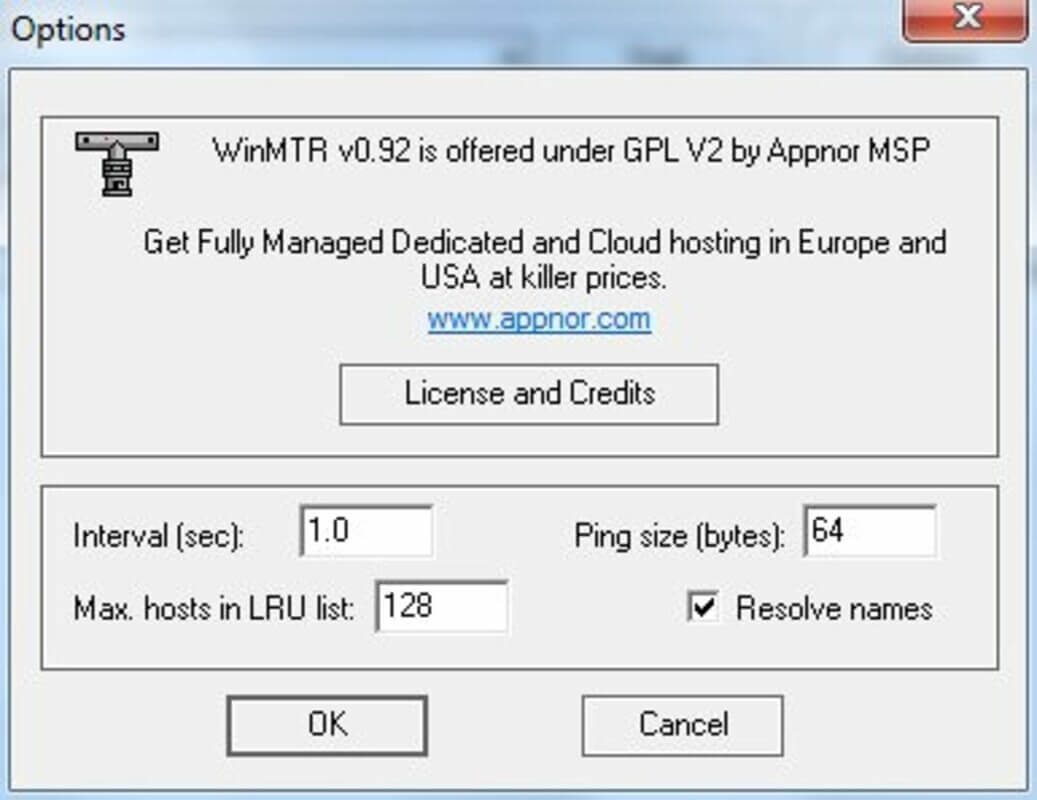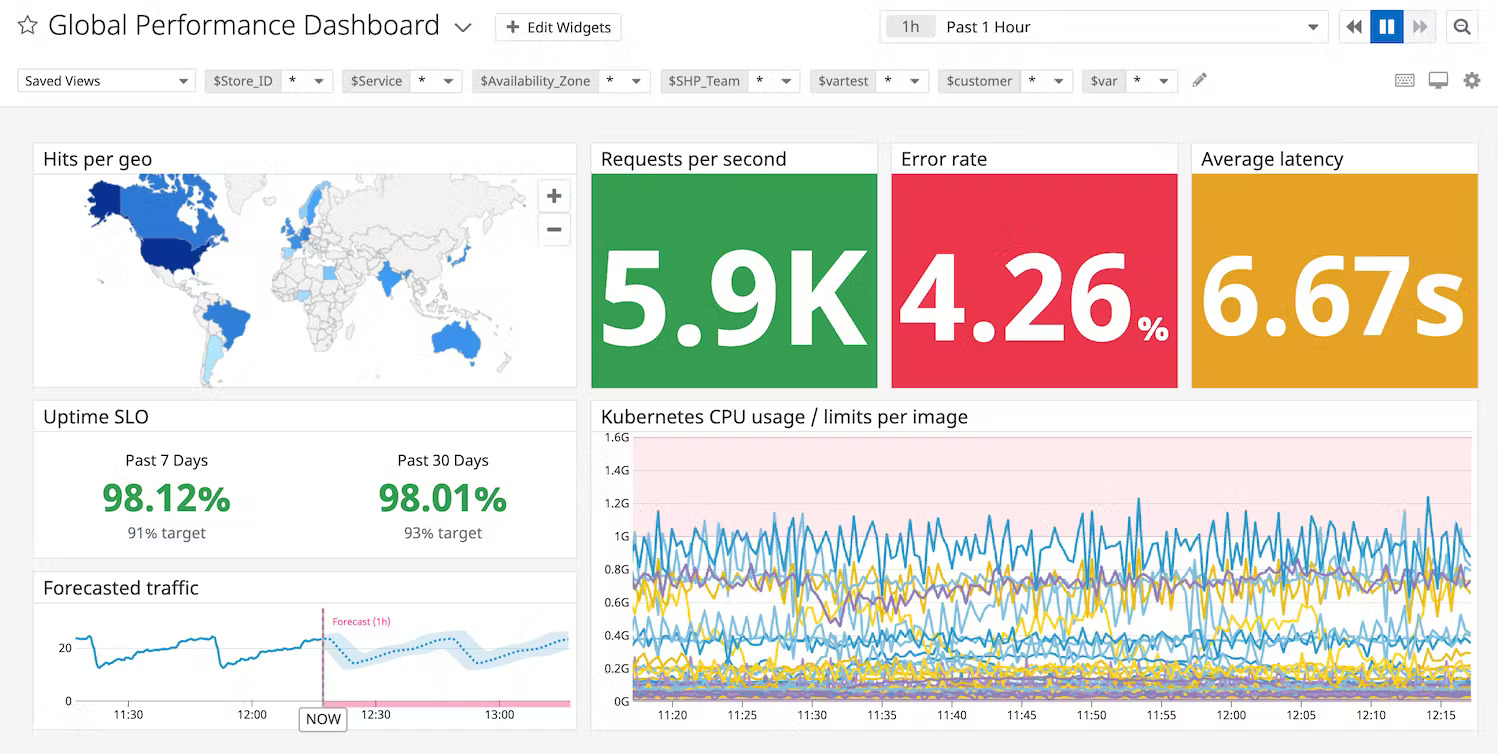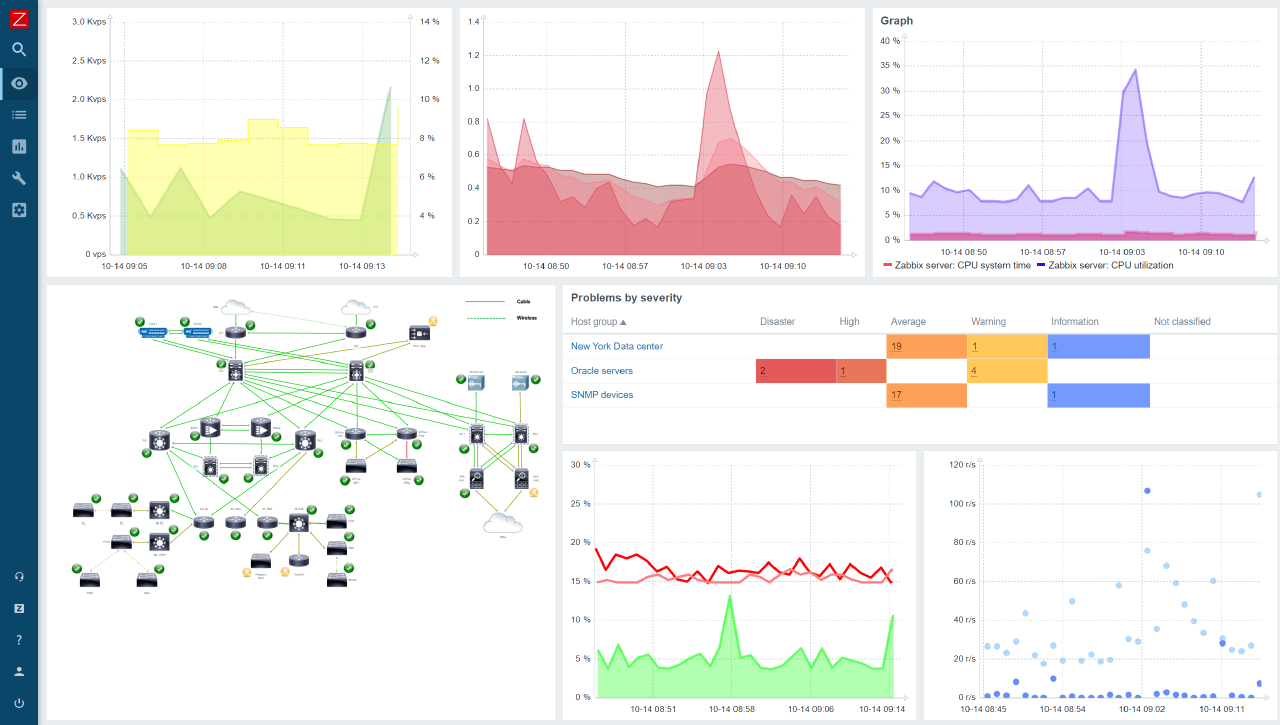
Top 10 PingPlotter Alternative
PingPlotter is a network troubleshooting and monitoring tool designed to help users diagnose and resolve network issues effectively. It gives users real-time insights into network performance by continuously monitoring network connectivity and identifying potential bottlenecks.
PingPlotter offers continuous monitoring of network connectivity by sending ICMP echo requests (pings) to target destinations at regular intervals, allowing users to track network performance over time. The tool visually represents network paths and hop-by-hop latency, enabling users to identify routers, switches, and other network devices that may be causing latency or packet loss.
PingPlotter also stores historical data and generates graphs and charts to visualize network performance trends, making it easier for users to identify patterns and diagnose recurring issues. Users can set up customizable alerts to receive notifications when network performance metrics exceed predefined thresholds, helping them proactively identify and address potential issues before they impact operations.
Challanges and limitations of PingPlotter
- It’s confusing to see which targets are currently running pings and which are displayed in the plots.
- The cost is a bit high for a single license
- The graphical highlighting for latency is confined to a singular section of the user interface.
- The sharing feature for reports could encompass more than solely a screenshot.
- No country information
- No ASN information
- Configuration is a little bit complex
- Editing capabilities within the GUI are limited
Top PingPlotter Alternative
UptimeMonster
Reliable website and server monitoring service from the cloud to monitor your web availability, performance, and security. The tool will give you a 24/7 website monitoring service that will Monitor the availability of your website, APIs, and business-critical web transactions with powerful synthetic monitoring and testing tools.
It collects, correlates, and monitors servers alongside data from the rest of your stack. UptimeMonster server monitoring allows you to visualize, analyze, and track down different query metrics happening on your server so that you can prevent them before anything goes wrong.
Monitor your network performance like IP, DNS, Service port, Application, and others using the check monitoring tools. It will enable you to understand the network behavior and track NetFlow.
UptimeMonster check monitoring service will give you full control over your network. The check monitoring types are as follows
- TCP (Transmission Control Protocol)
- ICMP PING (Internet Control Message Protocol)
- IP Blacklist
- UDP (User Datagram Protocol)
- DNS (Domain Name Server)
- Application Monitoring

With a status page, you can share your monitoring activities and incidents with customers. You can easily make our status page public or private. You can highly customize your status page and share it with your customers to reduce the number of customer support tickets.
Using the status page you can easily gain trust from your customers. The alert notification easily notifies your customers about any incidents so that they can take necessary steps to prevent the issue. So that they will always be prepared and stay tuned.
Create and customize intricate policies for the escalation of incidents by taking into consideration various factors, including the passage of time, the availability of your team, and the source or origin of the incident.
The primary advantage, however, lies in integrated incident management and alerting. This is particularly advantageous for DevOps teams aiming to streamline their stack and potentially handle everything from a unified platform, eliminating the necessity for additional platforms.

Key Features
- Reliable Website and Server Monitoring
- Network Performance Monitoring
- Check Monitoring Types
- Status Page Customization
- Alert Notifications
- Incident Escalation Policies
- Incident Timeline
- SSL Expiration Monitoring
- Search String Monitoring
- Monitoring for HTTP(s), Ping, Port, DNS, SSL & TLD expiration, Cron jobs
- Unlimited email and push notification alerts
- Capture screenshots & error logs for incidents
Pros
- Reliable Uptime Monitoring
- Easy Setup and Configuration:
- Cost-Efficiency
- Customer Support:
- Accurate Reporting:
- User-Friendly Interface
- Customizable Alerts
- Status Page
- Escalation policies
- Incident Timeline Report
Cons
According to user reviews, UptimeMonster doesn’t exhibit any notable drawbacks. However, a few users have highlighted certain feature limitations present in the free plan offering. These limitations might include restricted access to certain functionalities or reduced capabilities compared to the premium plans. Despite this, the overall consensus from users is overwhelmingly positive regarding the platform’s performance and functionality.
Our perspective on this matter revolves around the notion that smaller teams might not necessitate the utilization of numerous advanced features. Therefore, it appears reasonable to curtail access to certain functionalities, considering that smaller teams might not require or fully utilize these advanced features. This approach ensures a streamlined and more focused user experience, optimizing the platform’s usability for smaller teams with specific needs.
Pricing
- Standard plan at $7/month with 30 monitors and 2-minute interval
- Professional plan at $19/month with 50 monitors and 1-minute interval
- Business plan at $99/month with 100 monitors and 25-second interval
WinMTR
WinMTR is a network diagnostic tool that’s open code and very easy to use. You just have to run the software, enter the name of the host or the destination IP address, and the program will analyze how everything looks between the two points.
This application lets you establish a route between your location and a specific address so you can find and track packs and their activity on the network.
The results obtained can be exported either in HTML or .txt and although it can sometimes be complicated tracking the route, with this application you just have to configure the size of the ping in the options menu and then push the start button.
In a matter of minutes, you’ll have a detailed report that includes all the information relevant to the route you’ve just traced.

Key Features
- Traceroute Functionality
- Continuous Monitoring
- Detailed Reporting
- Graphical Interface
- Customizable Options
- Integration with Other Tools
Pros
- Ease of Use
- Comprehensive Network Analysis
- Continuous Monitoring
- Real-Time Reporting
- Open Source
Cons
- As the name suggests, WinMTR is designed specifically for Windows operating systems, limiting its utility for users on other platforms such as macOS or Linux.
- While WinMTR offers robust network diagnostic capabilities, it may lack some advanced features found in more specialized network monitoring tools, such as traffic analysis or deep packet inspection.
- WinMTR relies on ICMP (Internet Control Message Protocol) for traceroute and ping operations, which may be blocked or restricted by firewalls or network security policies, limiting its effectiveness in certain environments.
- No Remote Monitoring: Unlike some network monitoring solutions, WinMTR does not support remote monitoring or centralized management, requiring users to run the tool locally on each machine they wish to test
Pricing
- WinMTR and open source and subscription-free
Path Analyzer Pro
Path Analyzer Pro provides comprehensive network route tracing, performance tests, DNS, whois, and network resolution functionalities to investigate and resolve network issues effectively. Integrating these powerful features into a single, intuitive graphical interface has made Path Analyzer Pro an indispensable tool for network, systems, and security professionals alike, available on both Windows and Mac OS X platforms.
The table containing detailed path data, and graphs are displayed illustrating various network metrics. These metrics include Hops, IP address, Hostname, ASN (Autonomous System Number), Network Name, Packet Loss Percentage, Latency, Average Latency, and Standard Deviation. Additionally, users can access a geographical map representation of their network paths, providing information such as the Number of Hops, Longitude, Latitude, Hop Number, IP address, Hostname, and ASN for each point along the route.

Key Features
- Generate impressive reports effortlessly and export them to impress your colleagues
- Intuitive graphical interface tailored for Windows and MacOS X users.
- Vibrant charts highlight network issues with clarity
- Easily locate IP addresses on a map with zoom, pan, and detailed information
- Eliminate guesswork from performance testing with clear charts and graphs
- Access law enforcement-specific features, including email address tracing.
Pros
- Report Generation
- Clear Visualization
- Geographical Mapping
- Performance Testing Clarity
Cons
While available for Windows and MacOS X, the tool may not be accessible to users on other operating systems, limiting its potential user base.
Depending on the user’s familiarity with network analysis tools, the tool’s advanced features may present a learning curve for some users, particularly those with limited technical expertise.
Generating reports with stunning visuals and detailed analyses may require significant computational resources, potentially impacting system performance on less powerful hardware configurations.
Depending on the pricing model, the tool’s cost may be prohibitive for some users, particularly individuals or small organizations with limited budgets.
Spiceworks Network Monitor
Spiceworks Network Monitor is an intuitive website monitoring software that provides real-time status updates for critical web services and applications. With its user-friendly interface, users can easily access an interactive dashboard equipped with tools tailored for efficient monitoring.
The platform allows monitoring agents to install particular agents on servers or workstations as needed, and even customize application URLs. Additionally, Spiceworks Network Monitor offers a range of intuitive tools to aid users in real-time, including an inventory manager for quick IP device scanning, software-specific data collection, and detailed hardware infographics.
Key Features
- Real-Time Monitoring
- Interactive Dashboard
- Customizable Monitoring Agents
- Inventory Management
- Contract Managemen
- Real-Time Alerts
Pros
- It’s free.
- Extensible with other (not free) products.
- Good basic monitoring.
- Easy to use and understand.
Cons
- Some users may find that Spiceworks Network Monitor is not as scalable as other enterprise-level network monitoring solutions, making it less suitable for large-scale deployments or environments with complex network infrastructures.
- Running Spiceworks Network Monitor on the same server as other applications may lead to resource contention issues, potentially impacting performance.
- While the platform offers some level of customization, users may find that it lacks advanced customization options compared to more specialized network monitoring tools.
- Despite being user-friendly overall, some users may find the interface to be overly complex or overwhelming, especially when configuring advanced settings or interpreting data.
- While the community support forum can be a valuable resource, users may encounter delays in receiving assistance or find that community members do not adequately address their specific issues.
- Users may feel dependent on the vendor for updates, bug fixes, and new features, which could potentially lead to frustrations if updates are infrequent or if critical issues are not addressed promptly.
- While Spiceworks Network Monitor is free to use, users may find that it lacks certain advanced features and functionalities that are available in paid network monitoring solutions.
Paessler PRTG Network Monitoring
PRTG network monitoring solution is designed to track network up/down status, traffic, and usage. Key features encompass availability, performance, and bandwidth monitoring through SNMP, WMI, packet sniffing, and NetFlow. Instant alerts, comprehensive reporting, and failover clustering are included.
PRTG Network Monitor operates as an agentless solution, eliminating the need for agent installations on target devices and applications. Instead, it utilizes network protocols like SNMP, WMI, NetFlow, or SSH for efficient and swift monitoring. This approach reduces the burden and ensures a seamless monitoring experience.

Key Features
- In-depth Reporting
- Maps and Dashboards
- Flexible Alerting
- Distributed Monitoring
- Cluster Failover Solution
- Multiple User Interfaces
Pros
- Agentless Monitoring
- Varied Network Protocols
- Customizable package
- Traffic management and comprehensive monitoring of network devices.
- Enables full-stack monitoring for a holistic view of the system.
Cons
- No patch manager
- Limited historical data in the free version
- It’s Windows base especially so managing too many Linux machines causes issues
- Licensing can be tricky as it is not based on devices but rather on sensors. Currently, each sensor, such as an interface, is counted as a sensor license.
- Maps are difficult to make
Site24x7
Site24x7 is a comprehensive website monitoring solution designed to ensure the optimal performance and availability of websites, servers, applications, and networks. The platform delivers automated network discovery and inventory management, coupled with the automatic generation of a network topology map.
It extends its monitoring capabilities across multiple sites and internet connections, including tracking the performance of web applications and websites.
Encompassing all IT assets, the Site24x7 system ensures complete stack observability. This facilitates instant root cause analysis in the event of any issues. For instance, if there’s a slowdown in application delivery, immediate insights will reveal whether it’s a network-related problem. Notifications about network device issues are promptly relayed, aiding proactive issue resolution.
Key Features
- Website Monitoring
- Server Monitoring
- Synthetic Web Transaction Monitoring
- Application Performance Monitoring
- Network Monitoring
- Public and Private Cloud Monitoring
- Real User Monitoring | RUM
- Cloud Cost Management
- Public Status Pages
- RMM for MSPs and CSPs
- Log Management from the Cloud
Pros
- Monitor Web applications and websites effectively.
- Track the performance of systems hosted both on-premises and in the cloud
- Full stack observability ensures immediate identification of root causes
- Ease of Use
- Integration Capabilities
Cons
- The setup of the Realtime user monitor was not as functional as expected about adding 3rd party scripts.
- Takes a long time to set up everything for monitoring
- Occasional False Positives
- Costly
Pricing
- Pro plan at $35 with 40 monitors
- Classic plan at $89 with 100 monitors
DataDog
Datadog’s website monitoring stands out as a comprehensive solution that offers unparalleled visibility. It goes beyond mere aggregation by seamlessly collecting metrics and events from an extensive range of over 500 integrated technologies, tagging and storing them for further analysis.
Notably, Datadog streamlines the entire process by taking care of the ingestion, normalization, and enrichment of logs, allowing users to focus on deriving meaningful insights rather than grappling with technical intricacies. This ensures a user-friendly experience and maximizes the efficiency of log management operations.
Furthermore, Datadog doesn’t stop at threat identification; it actively tracks the performance impact of every deployed code. This automated tracking extends to mapping data flows and dependencies through a service map, offering a visual representation of the intricate relationships within the infrastructure. By doing so, Datadog not only ensures robust security but also provides valuable insights into the operational dynamics of the entire system.
Pros
- Real-time log tracking
- Security monitoring
- Integrations
- Alerting system
- Custom downtime for deployment
Cons
- The primary weakness of Datadog lies in its scaling capabilities. Increasing metrics monitoring necessitates additional monitors, significantly impacting monthly billing and leading to high expenses.
- Datadog’s complexity might pose challenges, particularly for users unfamiliar with monitoring systems. Navigating and finding specific functionalities can be challenging without prior experience.
- Immediate action is lacking when decommissioning a host. It takes up to 24 hours for a host to be officially removed from the list, causing delays in real-time updates upon decommissioning.
- The basic plugins in Datadog offer limited information. Users often need to configure their plugins to obtain more detailed reports, adding complexity to data retrieval.
- Graphical reports in Datadog are not intuitively comprehensive, failing to provide easily understandable and valuable information to users.
Pricing
- Pro package at $15 per host/per month
- Enterprise package at $23 per host/per month
Nagios
Nagios is an open-source and commercial monitoring tool used by businesses of all sizes to keep their IT infrastructure up and running. It monitors everything from servers and networks to applications and services, alerting you to potential problems before they become critical.
Nagios XI diligently monitors various elements of your infrastructure, encompassing applications, operating systems, network architecture, network protocols, services, and system metrics. Its extensive library of hundreds of third-party add-ons empowers you to monitor virtually any internal or external program, service, or system with flexibility and adaptability.
Nagios Fusion unites dispersed Nagios XI and Core servers, granting panoramic network oversight and simplifying issue resolution across vast networks. Centralize diverse Nagios deployments with Fusion, boosting scalability and resolving geographically scattered network issues effortlessly.

Key Features:
- Monitoring of various IT components: Nagios can monitor servers, networks, applications, services, and more. It supports various protocols like SNMP, Ping, SSH, and WMI to collect data from different devices and systems.
- Customizable alerts and notifications: You can define custom alerts and notifications for different types of issues. Nagios can send alerts via email, SMS, instant messaging, or other channels to ensure the right people are notified promptly.
- Reporting and data analysis: Nagios provides comprehensive reports and data analysis to help you track trends, identify potential issues, and improve the performance of your IT infrastructure.
- Flexible and scalable: Nagios is highly flexible and scalable. You can start with a basic setup and add more features and functionality as your needs grow.
- Open-source and commercial options: Nagios Core is an open-source solution, while Nagios XI is a commercial version with additional features and enterprise-grade support.
Pros
- Highly customizable: Nagios can be customized to meet the specific needs of your IT infrastructure.
- Wide range of features: Nagios offers a wide range of features for monitoring different aspects of your IT environment.
- Powerful alerting system: Nagios’ alerting system ensures that you are notified of potential problems promptly.
- Active community: Nagios has a large and active community that provides support and helps you troubleshoot any issues.
- Cost-effective: Nagios Core is free to use, and Nagios XI is relatively affordable compared to other monitoring solutions
- Integration Capabilities: Nagios seamlessly integrates with various third-party tools and services, fostering compatibility and expanding its functionality according to organizational needs.
Cons
- Can be complex to set up: Nagios can be complex to set up for beginners, especially the open-source version.
- Requires technical expertise: Using and maintaining Nagios effectively requires some technical expertise.
- Limited scalability for large enterprises: The open-source version of Nagios may not be scalable enough for large enterprises.
Pricing
- The initial cost for Nagios XI begins at $1,995 per instance, billed on an annual basis.
Zabbix
Zabbix is a powerful, enterprise-grade monitoring solution that keeps a watchful eye on your IT infrastructure, ensuring everything runs smoothly and efficiently. Whether you’re a small business or a large organization, Zabbix provides comprehensive monitoring capabilities to safeguard your critical systems and applications.
Utilizing an extensive range of data collection methods, including JMX, SNMP, WMI, IPMI, and customizable scripts, this software provides a precision-focused approach to network monitoring. It can adapt diverse monitoring requirements, whether in on-premise or cloud environments, catering to networks of varying complexities.
Key Features
- Trend Prediction: Anticipate future trends with Zabbix’s trend prediction feature, enabling proactive measures based on historical performance data.
- Automated Problem Resolution: Zabbix streamlines operations with automated problem resolution, minimizing manual intervention and ensuring swift responses to detected issues.
- Anomaly Detection: Uncover irregularities in your network’s behavior using Zabbix’s anomaly detection, providing early insights into potential performance deviations.
- High-Level Map Navigation: Gain a comprehensive understanding of network structure and dependencies through Zabbix’s high-level view with map navigation, offering a visual representation of your network landscape.
Zabbix seamlessly integrates with a diverse array of IT infrastructure components, fostering compatibility and interoperability:
- Database Harmony: Collaborate effortlessly with databases, as Zabbix aligns smoothly with MySQL, PostgreSQL, and Oracle, ensuring seamless data synchronization.
- Cloud Compatibility: Embrace cloud services without constraints—Zabbix extends its capabilities to work seamlessly with cloud giants such as AWS and Azure, providing holistic cloud monitoring.
- Interconnectivity with Monitoring Tools: Forge connections with other monitoring tools effortlessly, as Zabbix harmonizes with popular solutions like Grafana and Elasticsearch, offering a unified and synergized monitoring ecosystem.
Pros
- Versatile Data Collection Methods
- Scalable to Large Networks
- Open-Source and Cost-Effective
Cons
- Steeper Learning Curve
- GUI Could Be More Intuitive
- Requires In-House Expertise for Setup and Maintenance
Pricing
- Zabbix Core: Free and open-source, ideal for individuals, small businesses, and non-profit organizations.
- Zabbix Enterprise: Paid version with additional features like enhanced security, distributed monitoring, and high availability. Pricing depends on the number of monitored items and licenses.
- Zabbix Professional Support: Optional paid support plans for Zabbix Core and Zabbix Enterprise, offering faster response times, technical expertise, and access to exclusive resources.
Updown.io
Updown.io offers essential uptime monitoring features, including HTTP and SSL checks, ensuring prompt detection of downtime confirmed from various locations before triggering alerts. Unlike some competitors, Updown.io does not provide a free plan, and opting for the paid plan is necessary, even for monitoring a single website.
However, the advantage of the paid plan lies in its flexibility, allowing users to pay based on the requests made to their websites. This cost-effective approach enables users to tailor their monitoring frequency to their specific needs, potentially saving money for hobby projects with less frequent checks. Nevertheless, for users managing multiple websites requiring more frequent monitoring, the expenses with Updown.io may surpass those of alternative solutions on the market.
Key Features
- Dual stack
- Fast check
- Various Integrations
- Status page
- Rest API support
- SSL check
- Text search
Pros
- Nice and clean UI
- Super easy setup
- Great support
Cons
- Limited features compared to some competitors
- No root cause analysis
- Limited historical data on the free plan
- No mobile app
Wrapping Up
Choosing the best PingPlotter alternatives requires a thorough assessment of your unique requirements and how well they match the features provided by different monitoring solutions.
After conducting thorough research and rigorous testing, UptimeMonster has proven itself as the premier substitute for PingPlotter. It encompasses all the vital features essential for smooth project management, presenting a cost-effective solution that is especially advantageous for startups and small teams.




